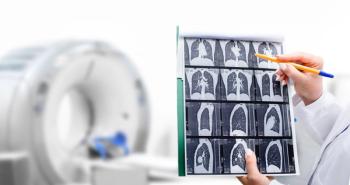
IPF survival rates better in double-lung transplantation
Double-lung transplantation in patients with idiopathic pulmonary fibrosis (IPF) and chronic obstructive pulmonary disease (COPD) was associated with better graft survival and patient survival than single-lung transplantation, according to a JAMA study.
Double-lung transplantation in patients with idiopathic pulmonary fibrosis (IPF) and chronic obstructive pulmonary disease (COPD) was associated with better graft survival and patient survival than single-lung transplantation, according to a major new study.
Published in the March 3 issue of JAMA, the
“This study is a robust review and analysis of the largest registry of lung transplantation in North America,” said Steve K. Singh, MD, one of the article authors and assistant professor of Cardiothoracic Transplantation and Mechanical Circulatory Support at Baylor College of Medicine in Houston, Texas.
Advantage for IPF patients
In IPF patients, double-lung transplantation was associated with better graft survival of 65.2 months on average versus 50.4 months on average for single-lung transplantation. However, there was not much of a difference in survival rates in COPD patients, who had 67.7 months on average graft survival with double-lung transplantation and 64 months on average for single-lung transplantation.
“This study provides strong evidence that for pulmonary fibrosis, recipients live over one year longer if they received a double-lung transplant, versus a single-lung transplant,” Singh said. “However, this advantage was not seen in patients with COPD; receiving a single or double lung is equally advantageous.”
In addition, the study results demonstrate that transplanting a double lung from a donor is advantageous to patients with IPF, in the short term and long term (measured at one year and five years).
“The risk of a patient dying continues to get less and less after surgery, by one year and continuing to five years in patients with lung fibrosis who get a double-lung transplant versus a single-lung transplant,” Singh said.
The study results give surgeons “more guidance regarding allocation of the scarce resource- donor organs,” Singh said. Because there is no added benefit to survival in COPD patients who receive single-lung transplantation versus double-lung transplantation, more COPD patients may undergo single-lung transplantation if donor organs are limited, according to Singh.
“It allows us to maximize the benefits of transplant to recipients, both in terms of longer life years added, as well as maximizing the number of recipients who can have improved quality of life with lung transplantation,” he said.
While this study pertains to patients with the diagnosis of IPF and COPD, further subanalysis could be done to see if there are particular subgroups, such as younger patients or those with pulmonary hypertension, who may have benefits to double-lung versus single-lung with COPD, or similar subgroup analysis for IPF patients, according to Singh.
Newsletter
Get the latest industry news, event updates, and more from Managed healthcare Executive.






















































